35 Years of innovation - Celebrating the enduring legacy of EASE
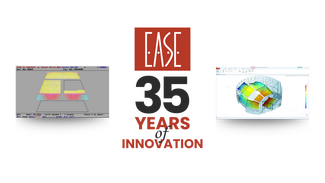
"Acoustic design projects should be carried out on a scientific basis. They should always be accompanied by a detailed on-site analysis and a precise computer model."
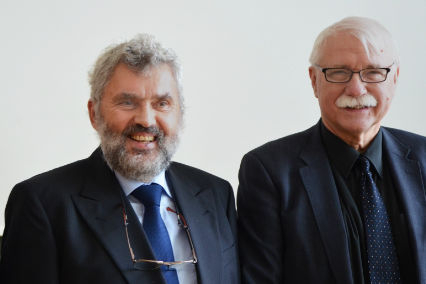
Genesis in Academia
This guiding principle, stemming from a collaboration initiated in 1982 between renowned acoustician Dr. Wolfgang Ahnert and theoretical physicist Dr. Rainer Feistel, hasn't merely shaped a piece of software; it has defined the philosophy of Ahnert Feistel Media Group (AFMG) and profoundly influenced the field of acoustic engineering for three and a half decades. As we celebrate the 35th anniversary of EASE, we trace the narrative of a tool built on scientific rigor, continuous innovation, and an unwavering commitment to empowering acoustic professionals worldwide.
The journey began not simply with code, but with foundational research. Dr. Ahnert, starting with an in-depth acoustic education and a dissertation at TU Dresden soon became the lead acoustician at the prestigious institute for cultural buildings in the communist GDR. Triggered by his experience with many acoustic design projects he recognized the burgeoning power of personal computers and partnered with Dr. Feistel to tackle the complex behavior of sound computationally. Their goal was clear: move beyond empirical estimation towards predictive accuracy. This scientifically grounded approach—a hallmark that persists in AFMG's research-oriented culture and collaborations with leading universities like RWTH Aachen and TU Berlin—laid the theoretical bedrock for EASE.

Introducing EASE
The fruits of this labor were unveiled to the professional world in spring 1990 at the AES Convention in Montreux, right after the collapse of the Berlin Wall. EASE 1.0, developed by Wolfgang Ahnert and Rainer Feistel, and field-tested by the Dr. Ahnert's newly established engineering office, ADA, emerged as the first manufacturer-independent software integrating both electro-acoustic system prediction and room acoustic analysis within a graphical, MS-DOS-based environment. Being an open platform, it permitted manufacturers to supply loudspeaker data and offered SPL plots and initial raytracing capabilities, providing engineers with unprecedented foresight and marking a definitive shift towards simulation-driven design. This innovation was supported early on by industry pioneers like Renkus-Heinz who became the first international distribution partner.
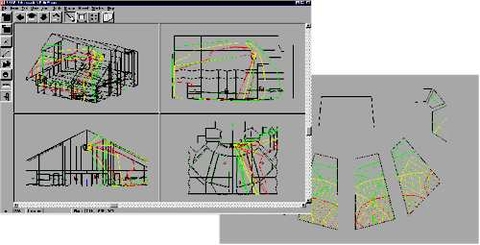
The evolution continued steadily. EASE 2.0, arriving in 1993, focused on usability, introducing features like a small room editor and rudimentary, yet impactful, color mapping to better visualize acoustic phenomena. A pivotal moment came in 1995 when Dr. Stefan Feistel joined the team, bringing critical support and expertise to navigate the transition to the Microsoft Windows platform – a move essential for the software's future accessibility and reach. This transition culminated in the 1999 release of EASE 3. Developed collaboratively by Ahnert and the Feistels, this first native Windows version represented a considerable leap. Its modern graphical interface, mouse input, interactive 3D views with OpenGL, 3D mappings, real-time auralization and more readily accessible simulation functions broadened the user base, democratizing advanced acoustic modeling.
From a research-oriented endeavor to a global commercial entity
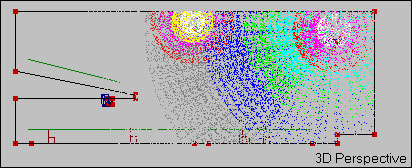
Recognizing the need for a dedicated structure to support the software's growth and prospering global community, Wolfgang Ahnert, Rainer Feistel and Stefan Feistel co-founded Software Design Ahnert GmbH (SDA) in 2000 – the direct precursor to today's AFMG Technologies GmbH. This provided the technical and commercial framework for the next major advancement: EASE 4 in 2002. This version tackled emerging challenges head-on, introducing the first truly accurate modeling methods for complex line array systems, based on the CDPS model. Simultaneously, it integrated the powerful AURA module, leveraging research from RWTH Aachen (CAESAR) to deliver advanced calculations for raytracing and scattering, enabling far deeper and more nuanced room acoustic analysis.
A cornerstone of modern acoustic simulation was laid in 2006 with the introduction of the Generic Loudspeaker Library (GLL) format. Moving beyond static data, GLLs allowed manufacturers to encapsulate complex loudspeaker behavior, including phase information, mechanical configurations, and even DSP parameters. This spurred the creation of the industry's most comprehensive, accurate, and vendor-neutral loudspeaker database – a vital resource maintained meticulously by AFMG.
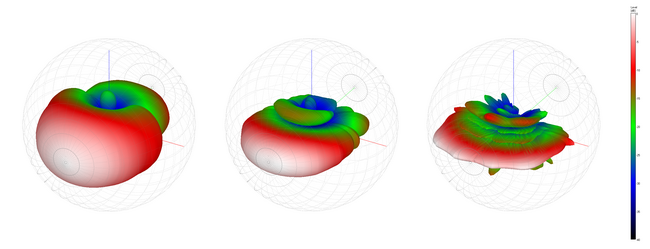
The ecosystem continued to mature, marked by AFMG taking over direct worldwide distribution in 2012. In 2017 the introduction of the GLL Plug-in API allowed manufacturers to embed custom logic directly within their data files, further closing the gap between simulation and reality.
A new era: The EASE 5 platform
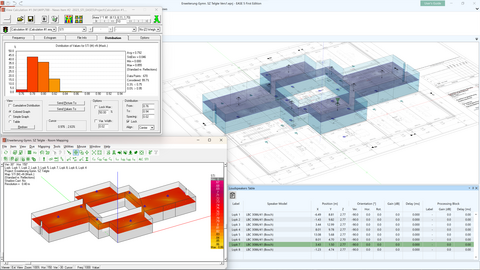
By 2019, AFMG was envisioning the next generation. EASE 5 was conceived not as an incremental update, but as a complete architectural rebuild – a modern, modular, and future-proof platform designed for continuous evolution and enhanced usability. Following valuable input from the Early Adopter Program launched in 2020, EASE 5 First Edition debuted in 2022, establishing this new foundation. The modularity quickly proved its worth: the Second Edition (2023) delivered state-of-the-art geometry modeling tools, extensive signal-processing and numerous innovative design functions such as for immersive systems analysis or speech intelligibility optimization. The pace accelerated further with the Third Edition (2024), which introduced the transformative Acousteer real-time simulation engine. A worldwide first, the live simulation shifted the paradigm towards interactive design, allowing users to see the effects of their modifications instantaneously with real-time SPL mapping.
35 Years of measurable impact
Tracing EASE's path from basic MS-DOS-based raytracing to real-time interactive simulation reveals more than just software evolution; it reflects AFMG's journey and its unwavering dedication to both scientific principles and great usability. This dedication has resulted in numerous industry firsts and many publications, contributing significantly to the collective knowledge base. Yet, the true measure of EASE's success lies in its impact on the daily work of thousands of professionals across the globe. It lies in enabling the design of safer spaces through intelligible announcement systems, quieter environments, and more captivating experiences through precisely engineered performance venues. This success is also found in the confidence engineers gain from reliable predictions, backed by comprehensive support, training, and meticulously curated data.
As EASE continues to evolve on the powerful EASE 5 platform, AFMG remains steadfastly committed to its founding mission: providing accurate, reliable tools that empower professionals to achieve demonstrably better sound and acoustics. For 35 years, EASE has been the sound of science at work, and its resonance continues to shape our acoustic world.